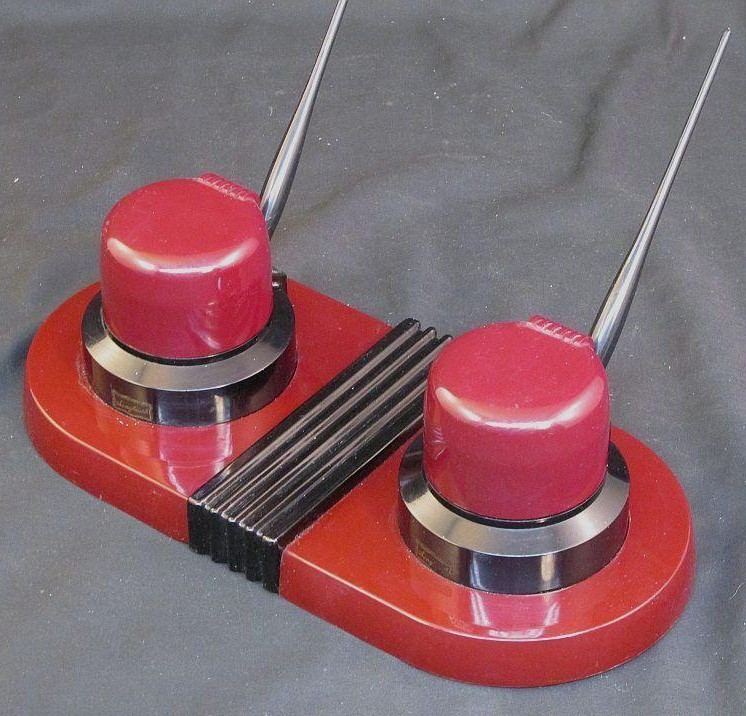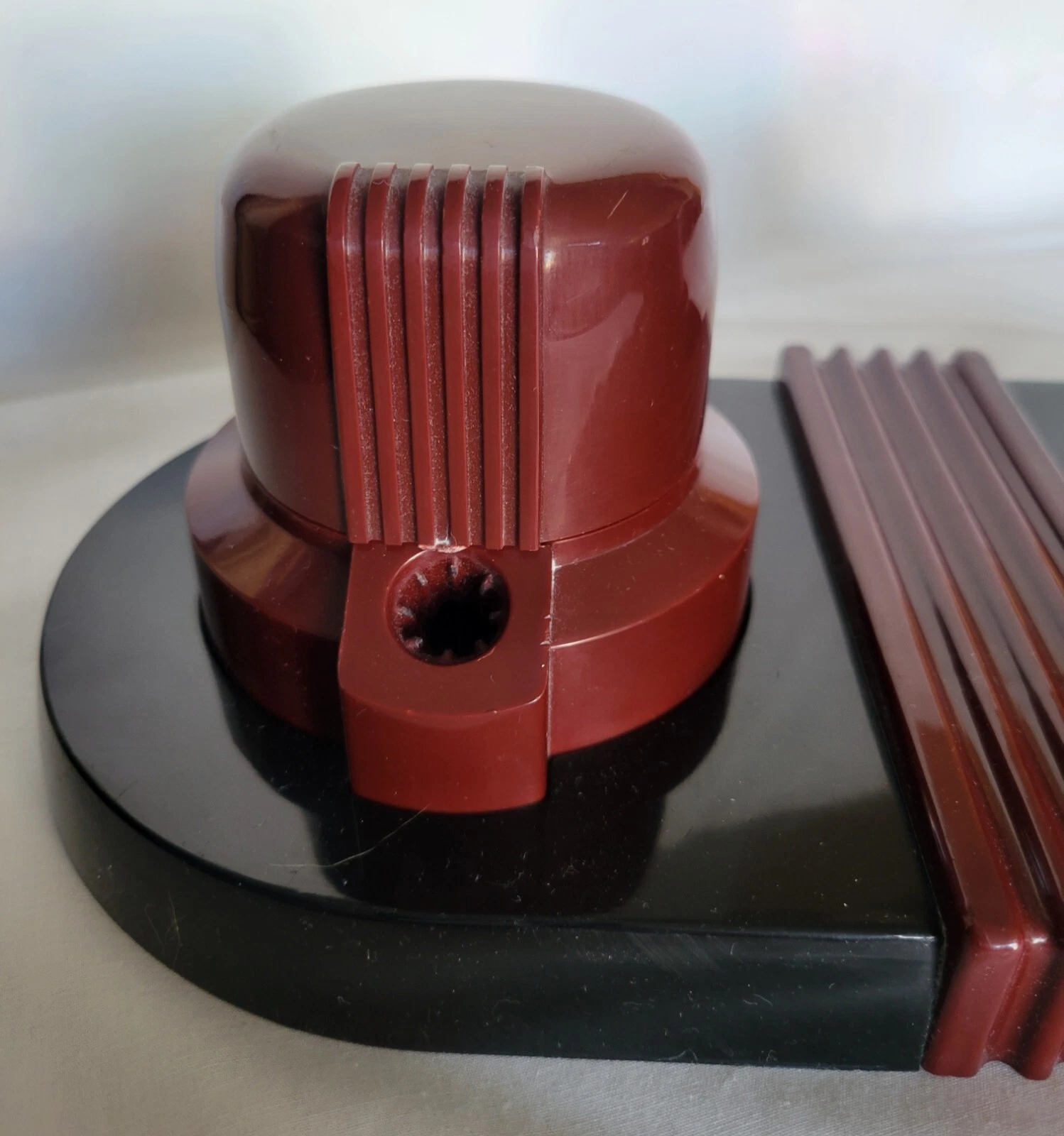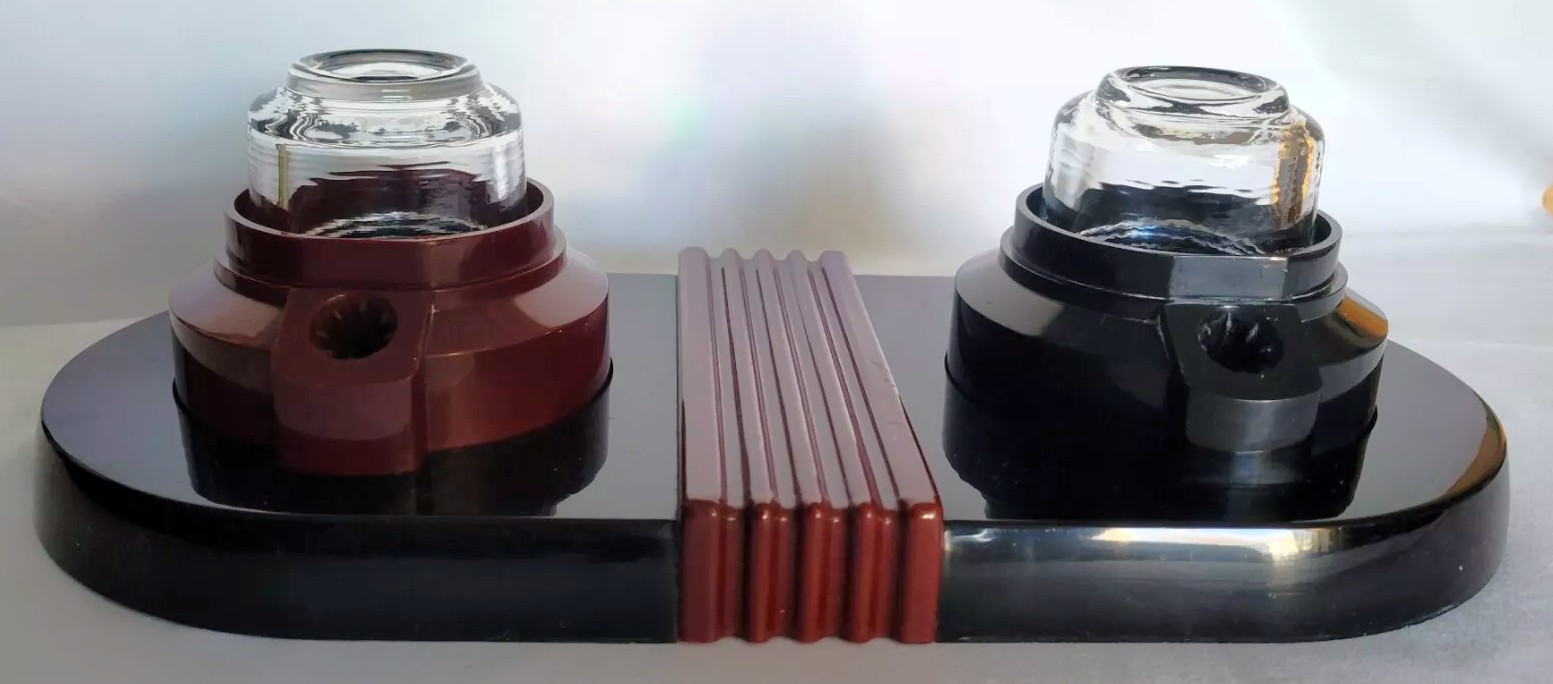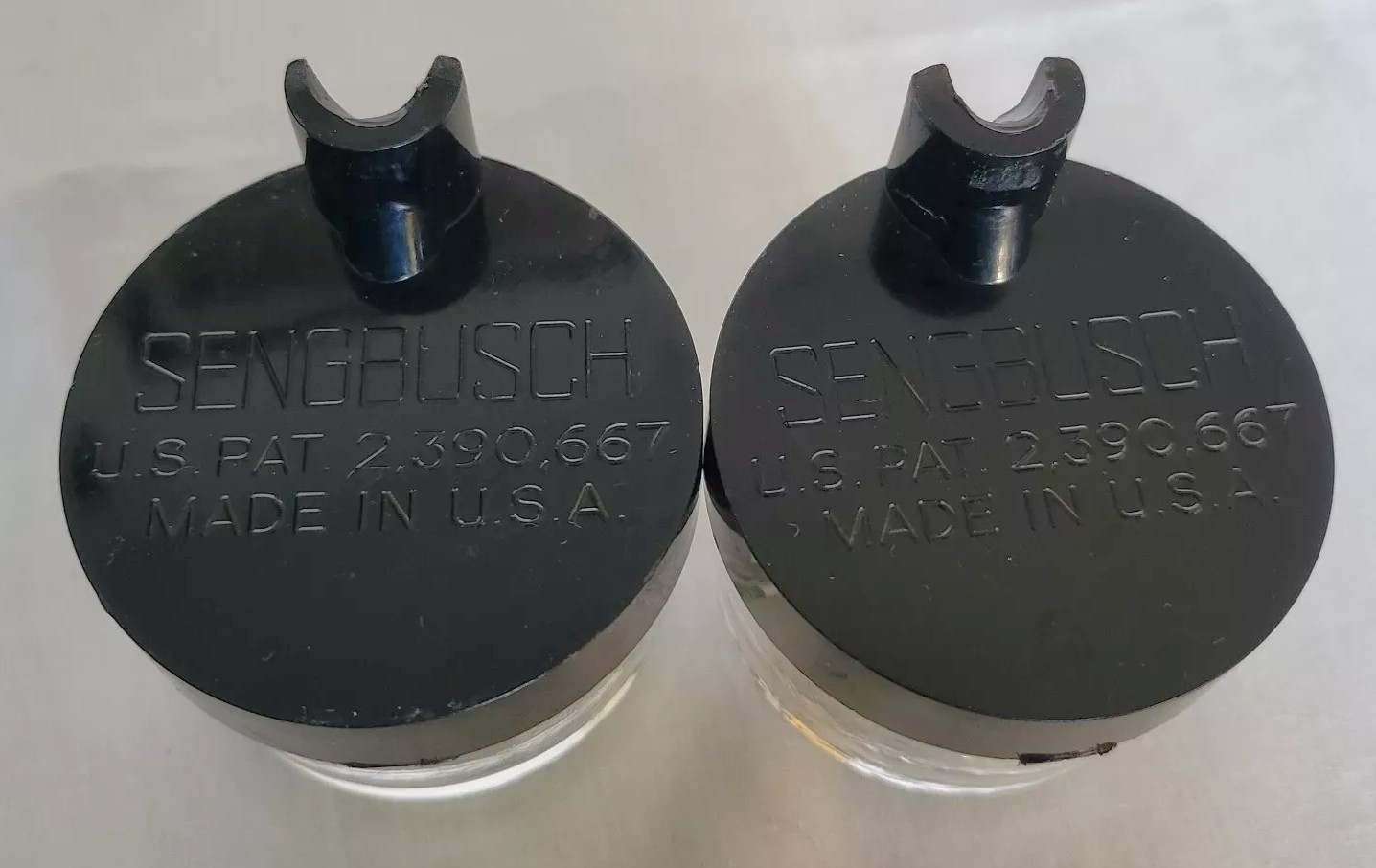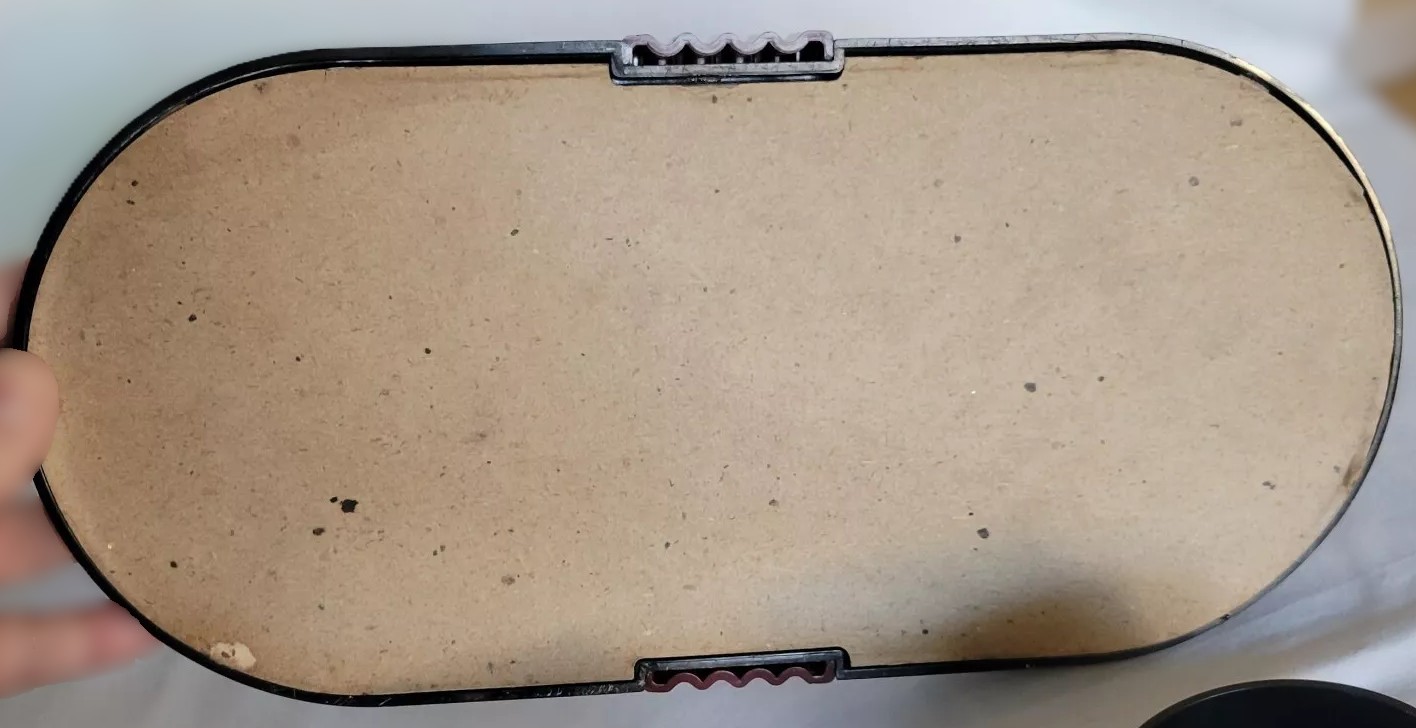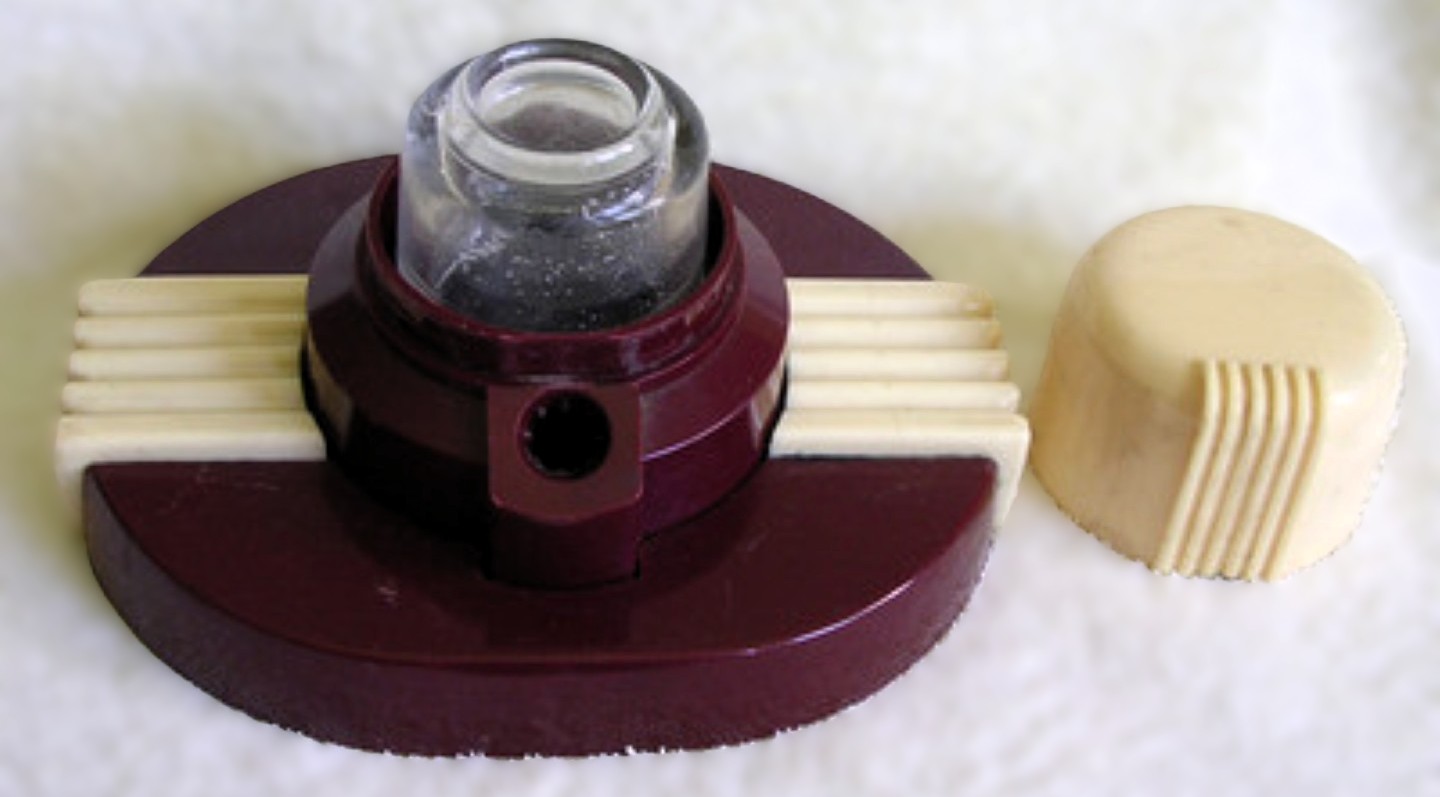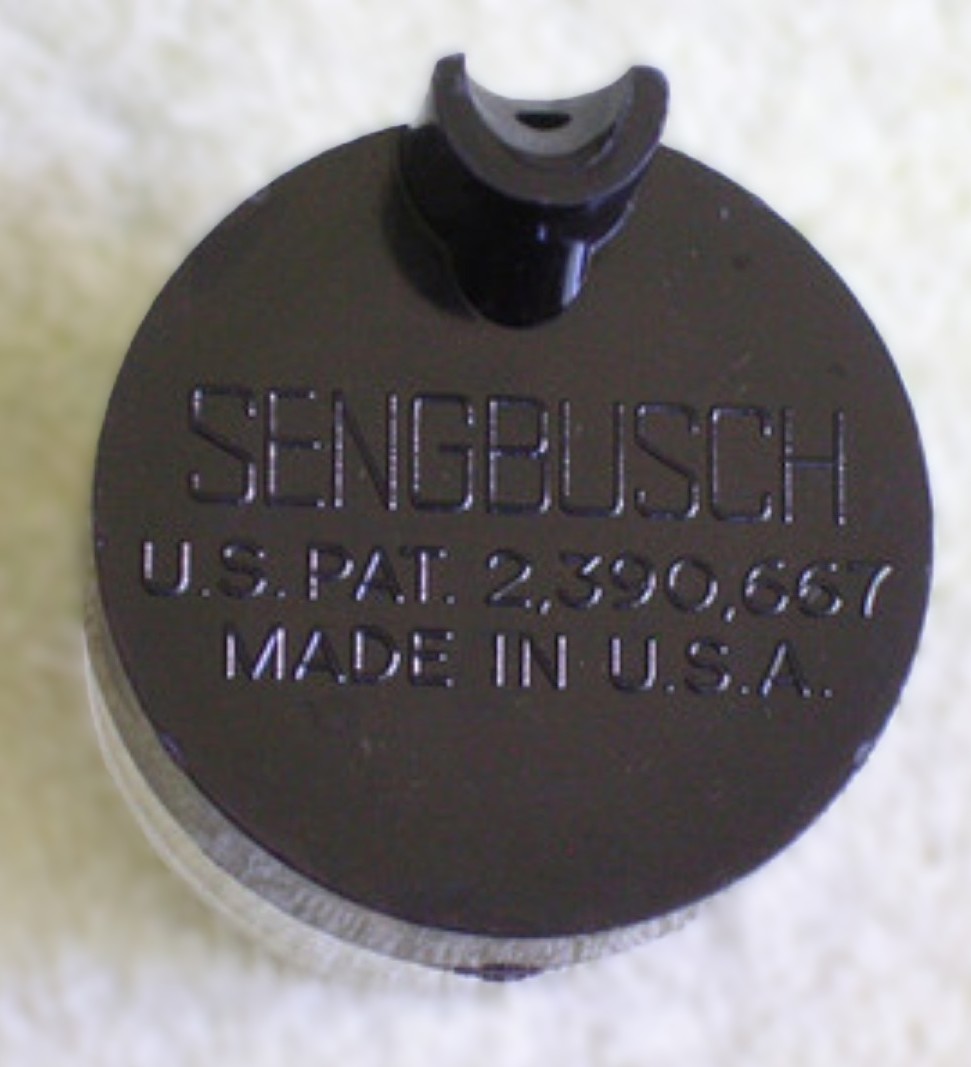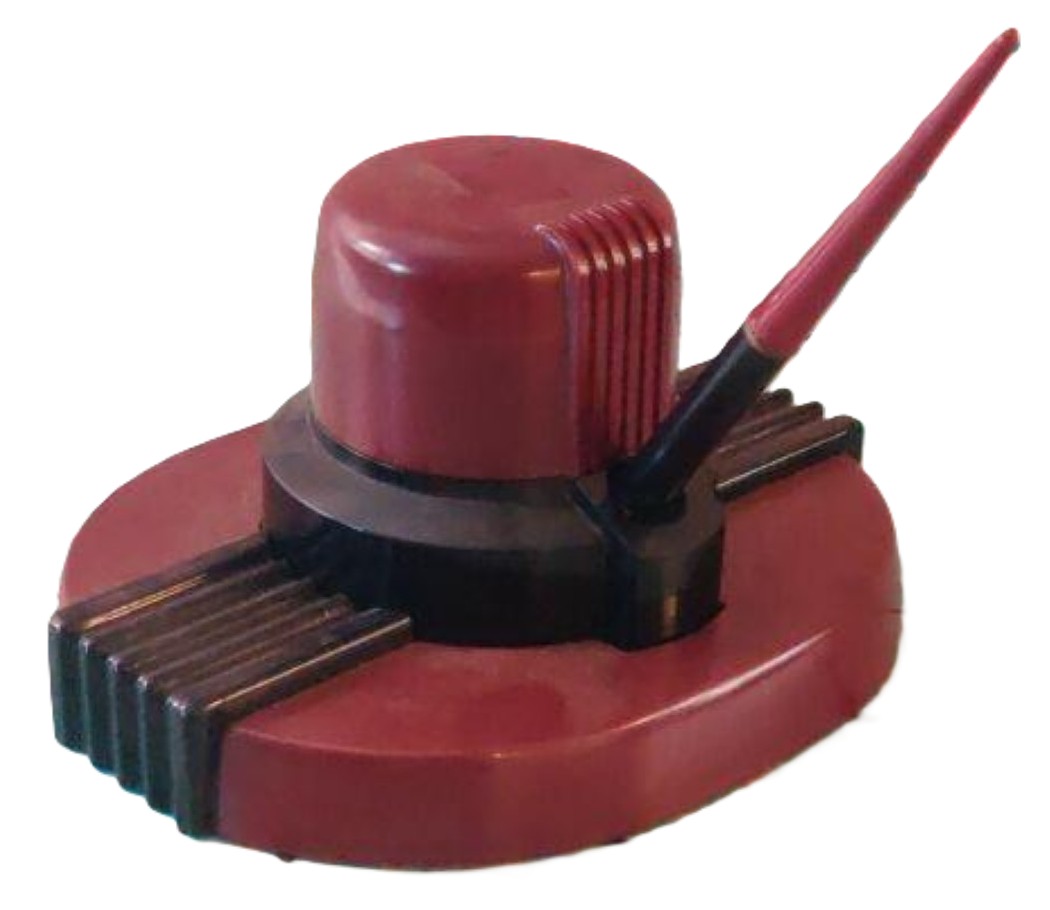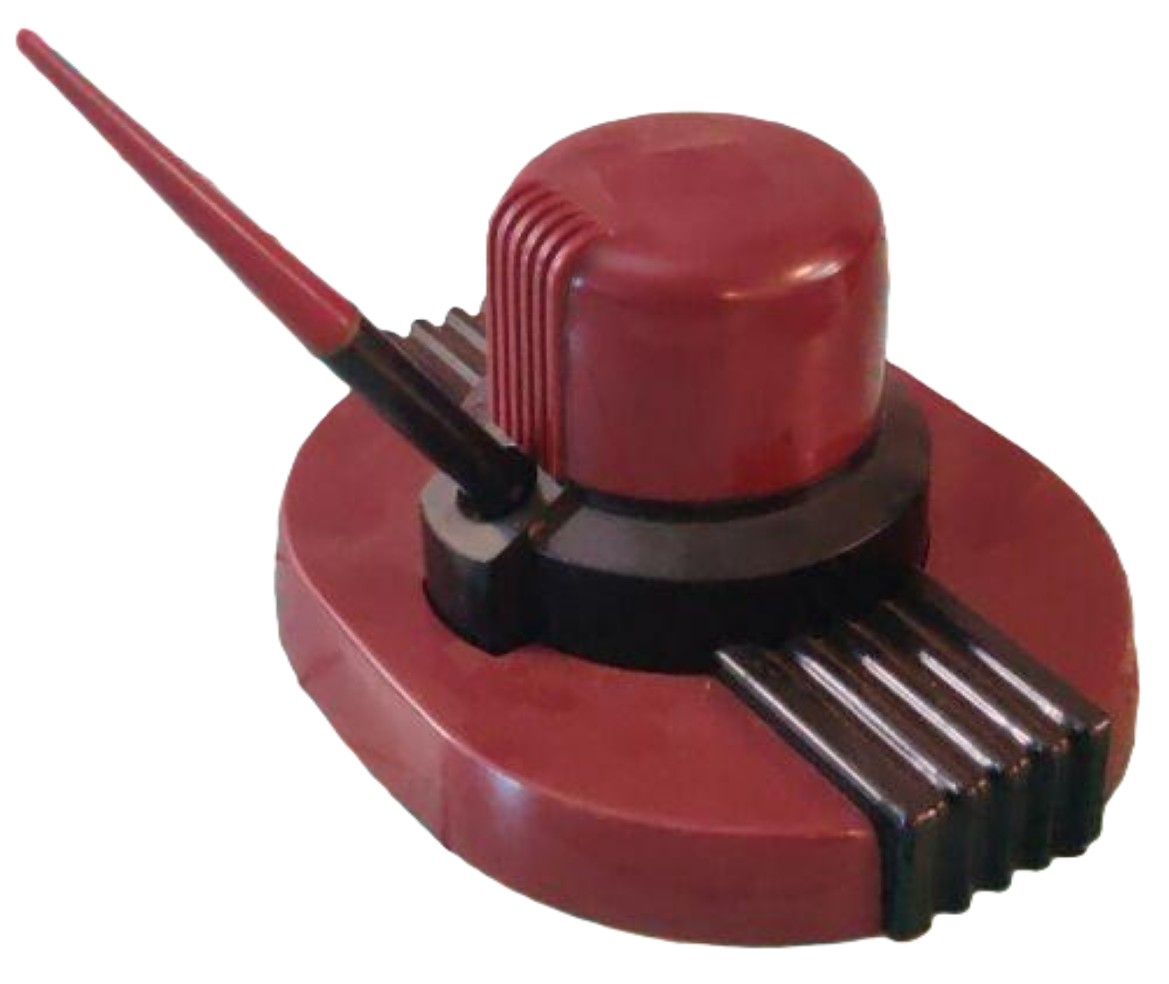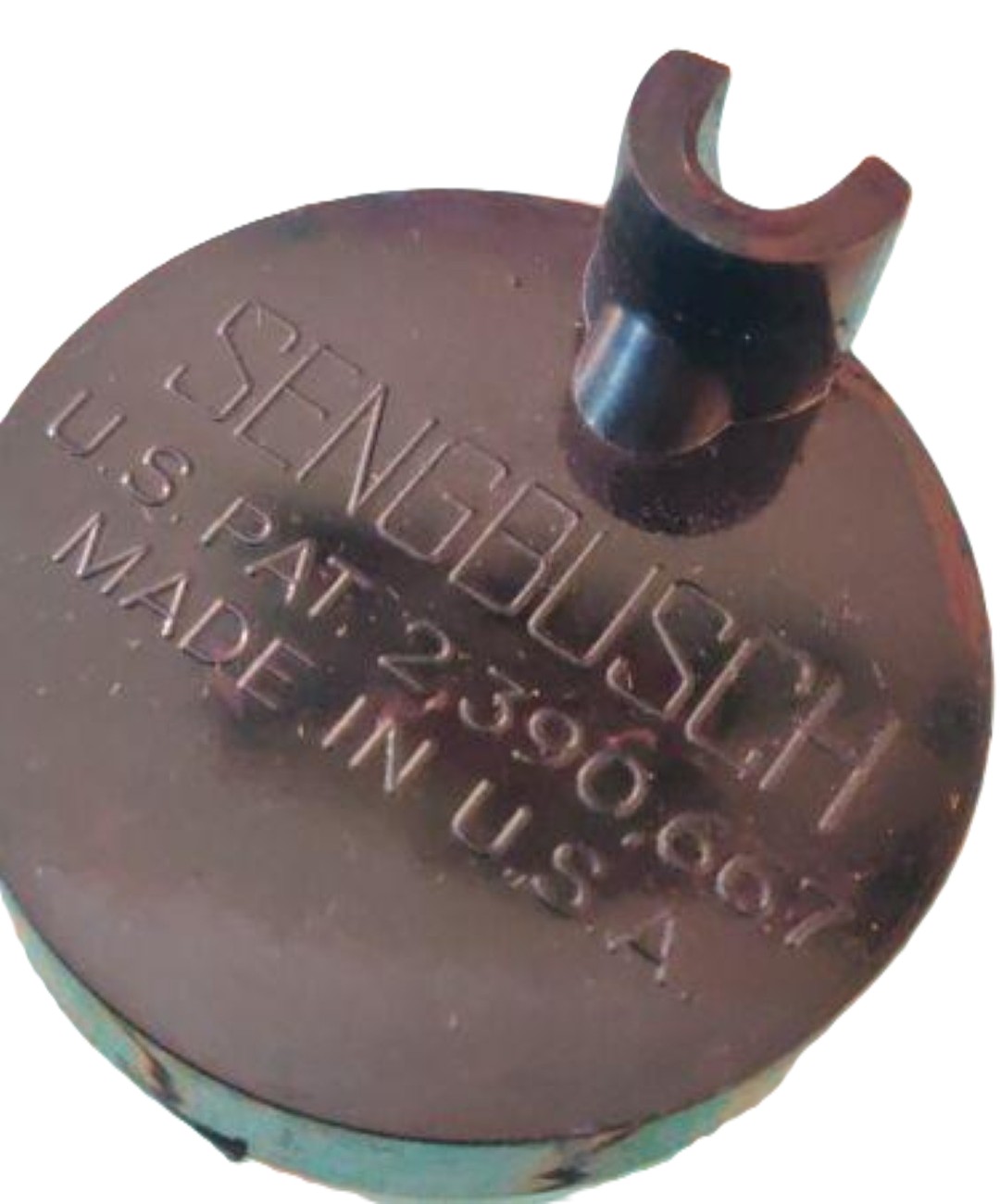
Sengbusch Art Deco Inkstands
| Categories | Art Deco, Plastic - Bakelite - Gutta Percha |
| Material | Plastic/Celluloid |
| Markings | See Narrative |
| Manufacturer | Sengbusch |
| Origin | United States |
| Date or Era | circa 1945 |
| Measuring | Double – 12” x 5 ¾” x 3 ¼” high / Single – 7” x 5 ¾” x 3 ¼” high |
| Patent | Patent #2,390,667 dated December 11, 1945 |
This double inkstand manufactured by the Sengbusch Company is a red and black, streamlined design. It features two inkwells, each with a cylindrical red cap, and pen holders on either side of a central, ridged section. The pens are resting in an upright position, which is consistent with the ink-filling system described in US Patent 2,390,667.
The inkstand is made of Catalin. Catalin, a brand name for a cast phenolic resin, was a popular plastic used for consumer goods in the 1930s and 1940s. It was known for its vibrant colors and glossy finish, which matches the appearance of the inkstand in the images. Catalin could be produced in a wide range of translucent and opaque colors.
The inkstand exhibits several key characteristics of the Art Deco style, which was popular from the 1920s to the 1940s. The design is a clear example of the machine age aesthetic that defines the movement.
- Streamlined Shape: The inkstand has a sleek, streamlined, and geometric form, particularly in the base and the ridged central section. This emphasis on elegant, elongated lines and curves was a hallmark of Art Deco.
- Symmetry and Repetition: The design is perfectly symmetrical, with two identical inkwells and pen rests on either side of the central element. The parallel ridges in the center also create a sense of rhythm and repetition.
- Modern Materials: The use of molded plastic (Catalin) instead of traditional materials like wood or metal is highly characteristic of Art Deco. The style embraced new, man-made materials and mass-production techniques.
- Bold, Contrasting Colors: The combination of a vibrant red body with black accents creates a striking and modern look. The glossy finish of the plastic further enhances this aesthetic.
Sengbusch made this line of inkstands in a variety of colors and both single and double inkstands. Additional pictures are shown here.
US Patent 2,390,667, filed on February 3, 1944, by Gustav J. Sengbusch, details an improved inkstand design. The invention’s primary purpose is to provide a stand that feeds ink to a pen without causing a messy overflow. The design addresses the issue of ink leakage and ensures that the pen point receives a consistent and controlled supply of ink.
Key Features of the Inkstand
- Upwardly Extending Ink Bottle: The inkstand houses an ink bottle that extends upwardly. This design uses a receptacle for the pen, which co-operates with the ink bottle to manage the ink flow.
- Ink-feeding Mechanism: A capillary feed bar is a crucial component of the design. This bar is positioned to direct ink to the pen’s point when it’s placed in the receptacle. Capillary action is used to control the ink flow, preventing excessive ink from coming out.
- Leakage Prevention: The patent highlights several features aimed at preventing leaks. A specific ink duct and a lower wall are designed to prevent ink from overflowing. The design also accounts for changes in atmospheric pressure and temperature, which could otherwise cause ink to expand and leak.
- Pen Placement and Support: The inkstand includes a structure to hold the pen in a specific position. The pen’s point is held in a way that allows it to receive ink from the feed bar while being supported to avoid disrupting the ink flow.
Double red (first example shown) sold for $245 in December 2015. Black & red example sold for $75 in July 2025. Other examples have sold in the $35 to $45 range.
Content disclaimer. The information posted is the owner’s best knowledge and may not have been vetted by the SOIC. We welcome comments, corrections, and additions, working to make our website information comprehensive and accurate.
Join the Society of Inkwell Collectors (SOIC) – it’s free!
Founded in 1981 as a non-profit organization,
we are documenting inkwells (and accessories).
We’re here to help and inform!

